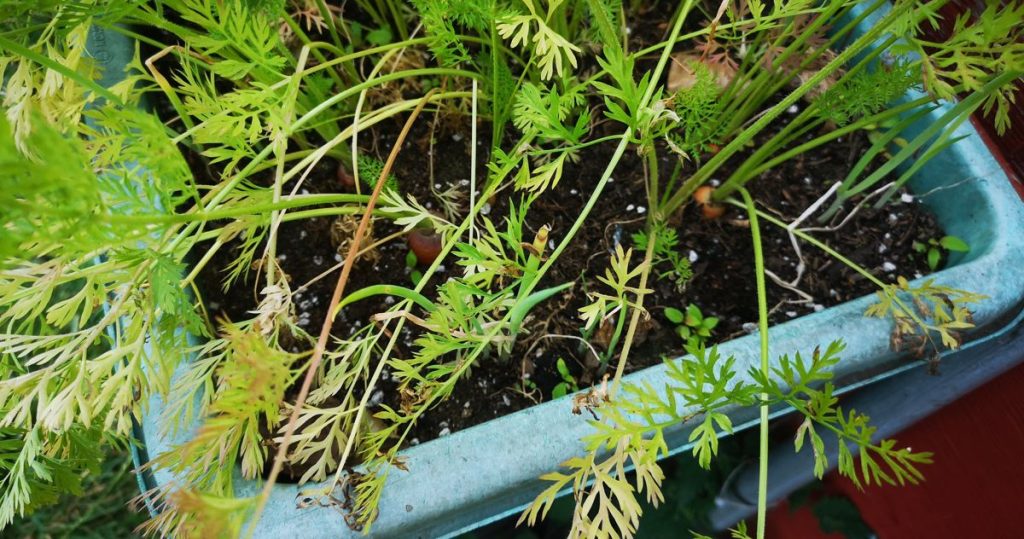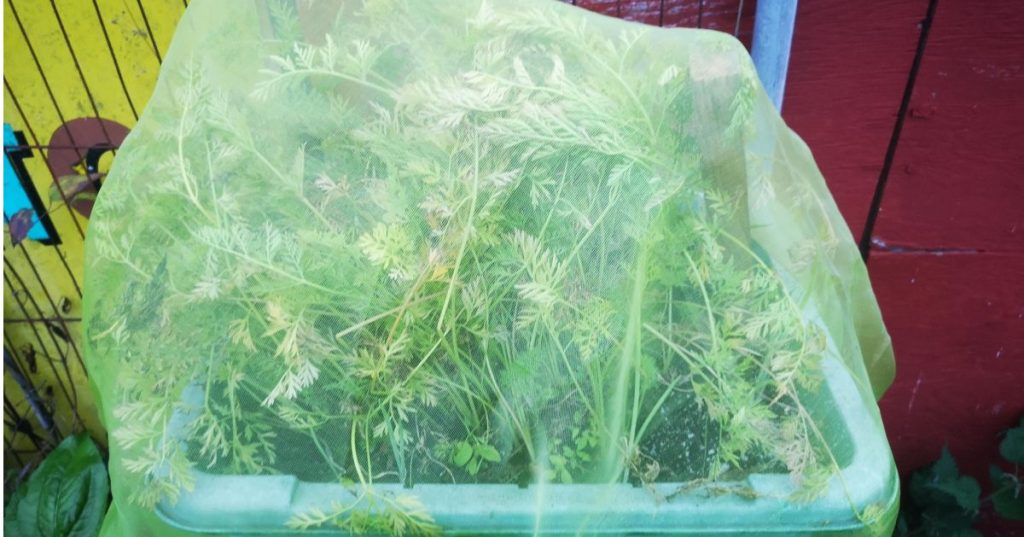Everything about carrots is wonderful: the vibrant colour, the fresh scent and the taste. They are so versatile and delicious, whether roasted, steamed, raw or added to cakes. Carrot is one of three diced vegetables that make mirepoix, which is a base used by many chefs to add flavour to soups, stews, braised meats, marinades and homemade burgers. Nutritious, sweet and crunchy, you can even put the leafy carrot tops in soups, stocks or salads. Some varieties of carrot can be stored and kept fresh well into winter. Find out how to grow carrot the easy way.
10 reasons to grow carrots
- Large amounts of cheap seeds in packets sold in most shops.
- Scatter the seeds directly in the ground so no need for a greenhouse or polytunnel.
- Low maintenance, they just need about an inch of water every week if it hasn’t rained.
- You can let some carrots flower and save the seeds for next year.
- They have a long harvesting season, with both early and late crop varieties available.
- Carrots can be blanched and then frozen.
- They can be stored in dry compost for months, well into winter.
- You can eat them raw with dips and salads or grate them into cakes.
- They bring colour and texture to dishes.
- Low in calories, they also contain fibre, vitamin A, calcium, beta-carotene and vitamin K.

Our carrots last year – what we did
Early carrots – on 24th April, we sowed the seeds straight into a large tub containing old compost, kept them watered in dry periods, and started harvesting them from mid-August.

Maincrop carrots – we sowed the seeds directly into the ground on 6th June, covered them with a little compost, kept them watered in dry weather, and started harvesting them from mid-September.
Recommended varieties: Nantes (early) and Touchon (maincrop)
How to grow carrots
What you’ll need:
- Carrot seeds
- Either a large deep tub or some well-dug ground.
- Some old compost
- Watering can or jug
What you’ll do:
- During spring or summer, scatter carrot seeds over damp compost in a tub, or in rows in the ground. Scatter them as evenly as you can.
- Lightly sprinkle over some old compost to cover the seeds.
- Water the sown area.
- In dry weather, give them about an inch of water every week. Ideally, this should be rainwater collected in water butts.
- Keep weeding around the carrots as they grow, but avoid disturbing the carrot roots.

Caring for carrots
Just keep them watered at an even rate so they never totally dry out or become saturated. Too much water can lead to too much leaf growth and too little carrot growth. In contrast, too little water can cause the carrots to split. They are still edible when split, but are not as attractive.

Harvesting carrots
As they mature, you will be able to see the tops of the carrots. It’s common for them to rise well above ground level. As a general rule, the wider the carrot, the longer it is likely to be.
Once you decide to harvest any carrots, we advise you to cover all the carrots with an insect mesh. This protects the carrots from carrot fly attack (see problems below).

Problems
Carrot flies find the scent of carrots irresistible. When you pull carrots from the ground or agitate the leafy tops, carrot flies may detect the smell and locate the crop. They will then lay their eggs in the base of the carrots.
Within a week, the eggs hatch and the larvae feed, which damages the carrots by leaving black holes and scarring. Covering the crop with insect mesh as soon as you start harvesting carrots should prevent any attacks.
We have read that carrot flies cannot fly higher than 50cm above the ground, so planting carrots in raised tubs should keep them safe. However, we have still found signs of carrot fly attack on crops grown in raised pots, so we now always use insect mesh once harvesting starts.
Carrots will fork if they hit a stone or obstacle in the ground. Although not as pretty, they are perfectly edible. Carrots will have a better shape when grown in finer soil.
Carrots may split if they dry out or experience extreme heat, so try to be consistent with watering.

Storing carrots
You can store carrots using various methods all year round. Find out how easy it is to store carrots.


